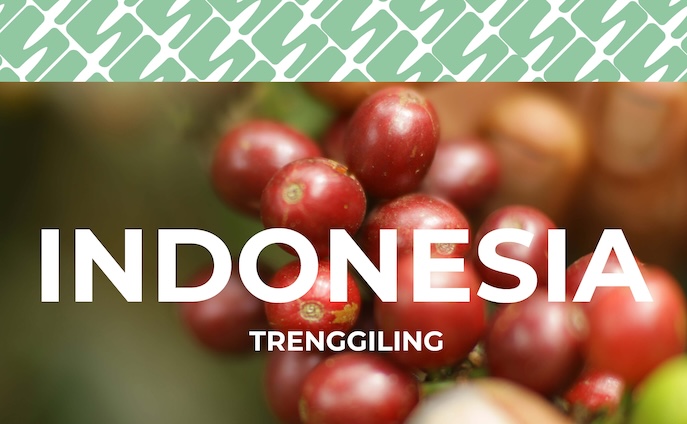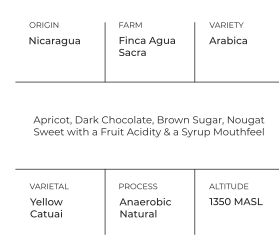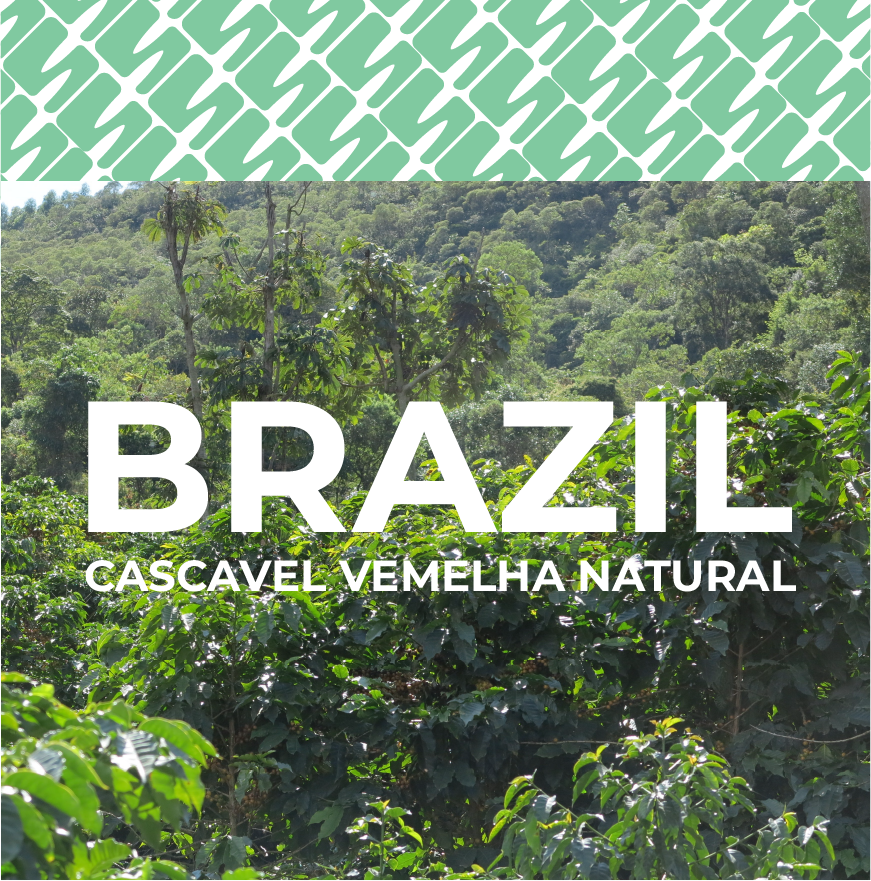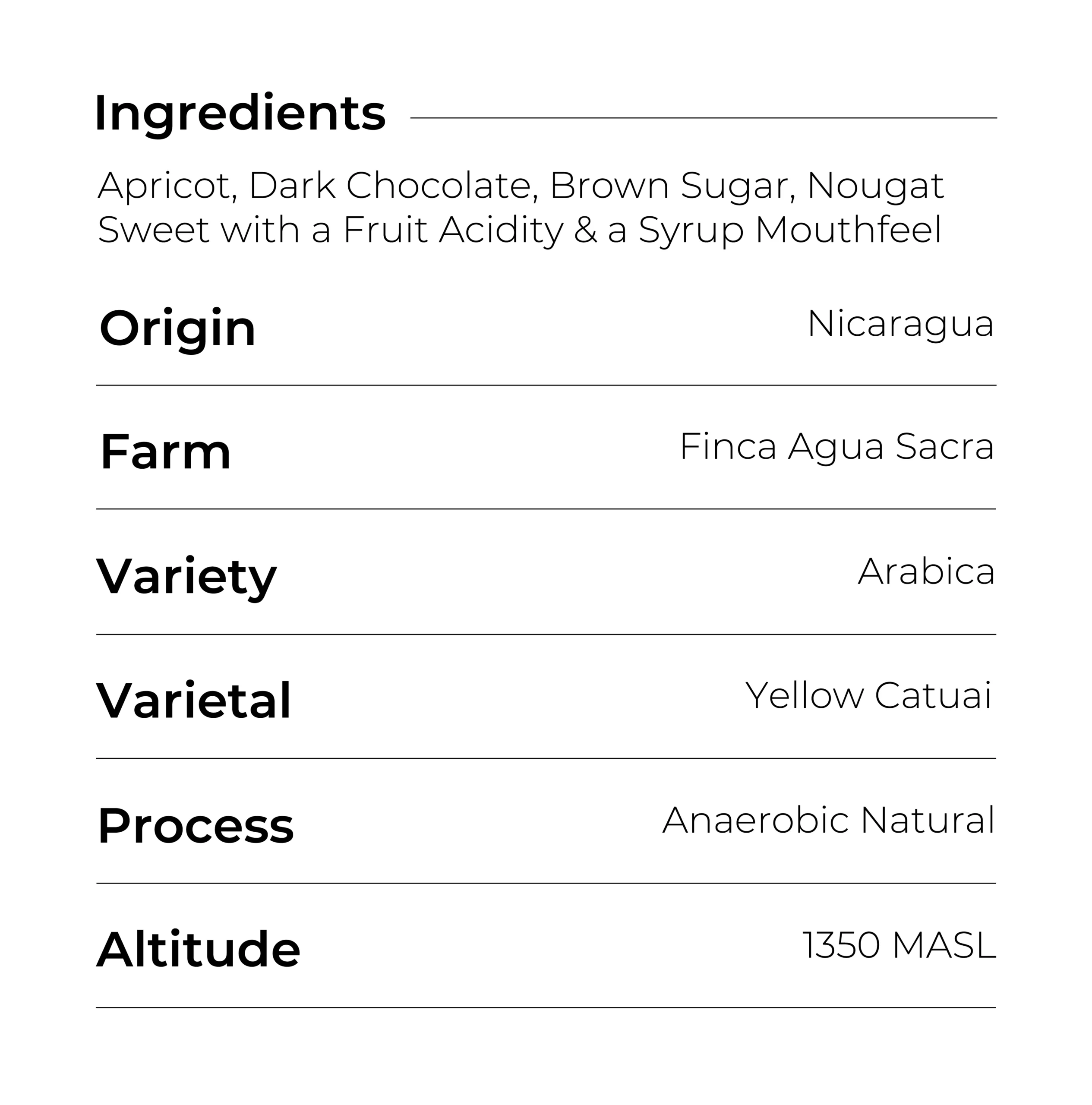25 $ – 900 $
Trenggiling Wet hulled
Indonesia -Aceh, Sumatra, Kerinci, West Java, Flores & Sulawesi
The Farm
Named for the endangered Indonesian pangolin, this coffee displays a classic Indonesian cup profile: full bodied, earthy, spicy, with flavors of dark chocolate and herbal notes. This unique flavor profile is rarely achieved from other origins and owes to the combination of geography, soil, climate, varieties, and the wet-hulled processing method.
Trenggiling is part of Sucafina Originals range, a line of consistent and affordable blends directly sourced from their vertically-integrated supply chain.
Most people associate the name “Mandheling” with good-quality Indonesian coffees. The name suggests that that coffee was grown on Sumatra; however, it can actually be added to all coffees traded through the major port in Medan, which has been Indonesia’s main hub for trading and export for decades.
Initially, Mandheling was composed entirely of coffee produced on Sumatra, the island where Medan is located; however, as demand for this coffee increased and wet hulling was replicated across Indonesia, it is estimated that somewhere between 70-90% of all wet-hulled coffee produced in Indonesia is exported via Medan and sold as “Sumatra Mandheling,” regardless of the island where it was actually produced.
Trenggiling is sourced through select partnerships with SUCAFINA across the Indonesian archipelago, where traceability can be verified to the point of village collector or district processor. SUCAFINA team on the ground controls quality from the point of purchase through export, collaborating with regional mills, warehouses, and logistics providers to deliver the unique flavor of Indonesia, year-round, and with the freshest harvest available.
Cultivation & Harvesting
Most farms are small. On average, farms are between 0.5 to 2.5 hectares. Coffee is usually the primary cash crop for farmers, but most also intercrop their trees alongside vegetables, maize and fruit. This intercropped produce will make up a substantial part of the family’s diet for the year.
In addition to growing coffee as a cash crop, many smallholder farmers also work at hired laborers at the nearby tea plantations. Tea is also a huge crop in the area. The bigger tea plantations are often near coffee farms. When the harvest is finished, coffee farmers will go there and pick leaves under contracted labor.
Indonesia is perhaps best known for its unique wet hulling process (giling basah). Though its exact origins are unclear, wet hulling most likely originated in Aceh during the late 1970s.
Wet hulling’s popularity can be attributed to producers’ need for prompt payments. It was also adopted specifically by many producers who lacked the drying infrastructure that was needed to shelter drying parchment from the high humidity and inconsistent rainfall typical in Sumatra. At higher elevations with constant humidity and unpredictable rainfall, drying can prove to be slow, risky and difficult.
The basic process for wet hulling is as follows: Cherry is harvested and pulped at or near the farm, on small hand-cranked or motorized pulpers. The coffee is fermented overnight (in small tanks, buckets, or bags) and washed with clean water the following morning. Parchment is sun-dried for between half a day and two days, depending on the weather, to allow for skin drying which eases the removal of parchment.
At this juncture the moisture content is between 30-40% and parchment is delivered to a processor for wet hulling. A wet hulling machine is larger, requires more power, and runs at a faster speed than a traditional dry huller. After the hulling, the coffee seed is whitish and pliable and is called labu. It is laid out to dry on tarps or patios, where it reduces in size and moisture to 14-15%. This stage the green coffee is known as asalan - unsorted and with defects. Much of the internal commercial trade is for asalan. Exporters, most of whom are based in Medan, will finish the drying down to 12-13%, sort and prepare for shipment.
Coffee at Origin
Indonesia has a long coffee producing history, but recently their coffees have been overlooked by the specialty market.
Indonesia is an incredibly diverse and expansive country. Each coffee growing region has their own unique system of production and trade, with local varieties, climate, and terroir contributing to the distinct profiles. The most well-known regions for specialty coffee are Aceh, North Sumatra, South Sulawesi, West Java, Bali, and Flores.
On average, farms are between 1-5 hectares and often grow vegetables, fruits, and spices alongside coffee plants. Many of these farms are in remote, difficult to access regions. A vast network of collectors, processors and traders connect the farmer to the exporter. There are hundreds of active exporters, mainly located in Medan. Surabaya in East Java is another hub for export (generally for coffees from Java and further east), while smaller volumes are exported from Jakarta and Makassar (Sulawesi).
The Indonesian coffee industry has experienced wide fluctuations in production and as a result, pricing. With strong demand from large roasters and increasing local consumption, a bad harvest can result in skyrocketing prices. For example, 2016 was a recent production high while 2017 was a historic low, caused mainly by unseasonably long rains and severe weather. By early 2018 dozens of exporters had gone bankrupt, unable to fulfill contracts they had sold prior to the price spike. To further complicate things, the exchange rate between the US dollar and Indonesian Rupiah is volatile and collectors can often hold stocks and speculate on the market.






